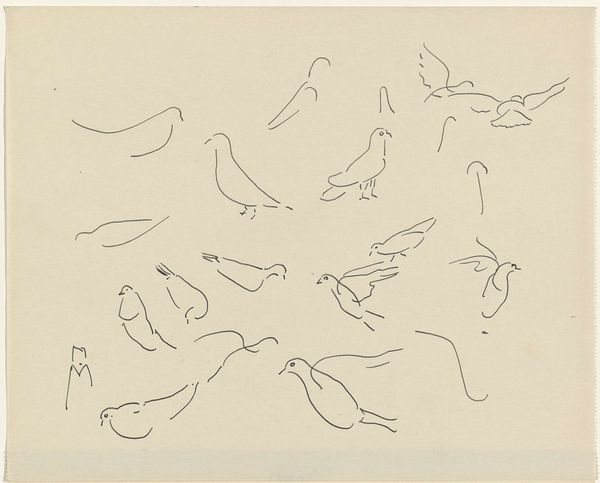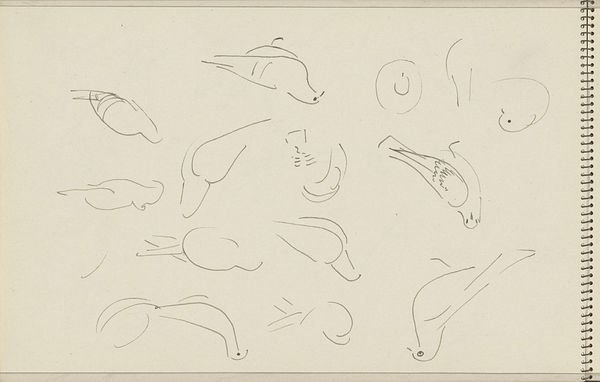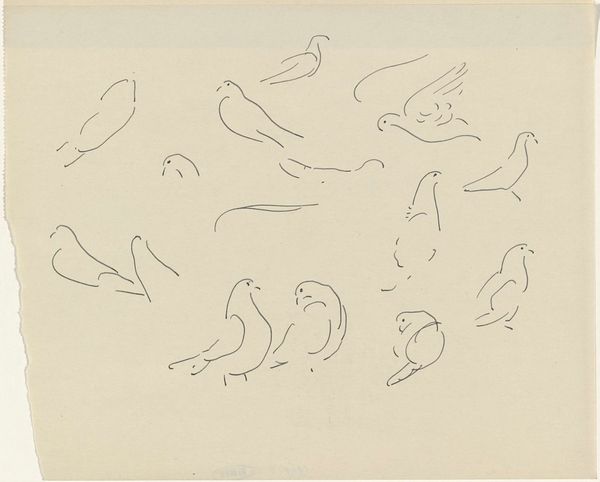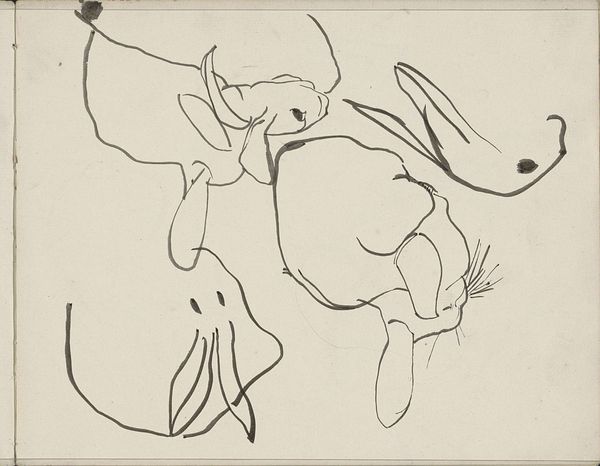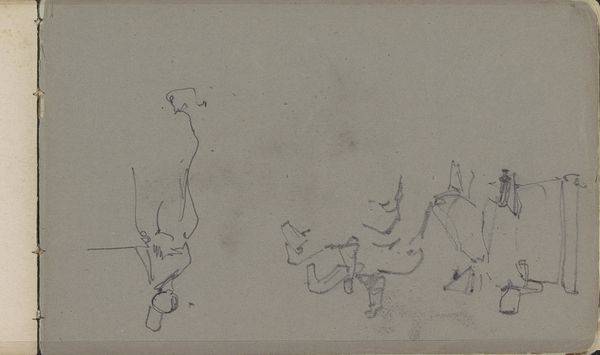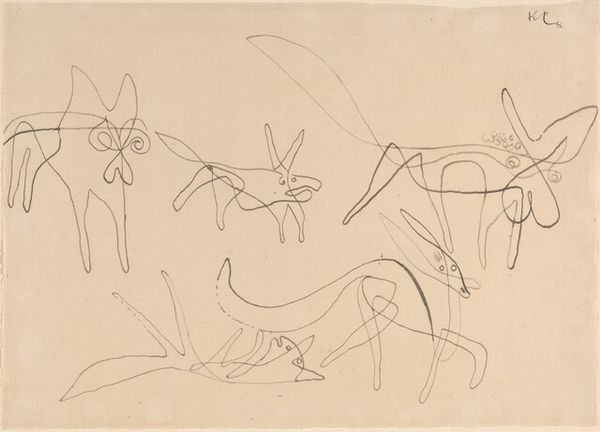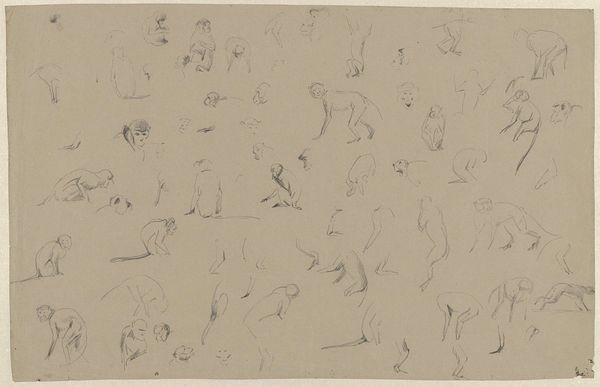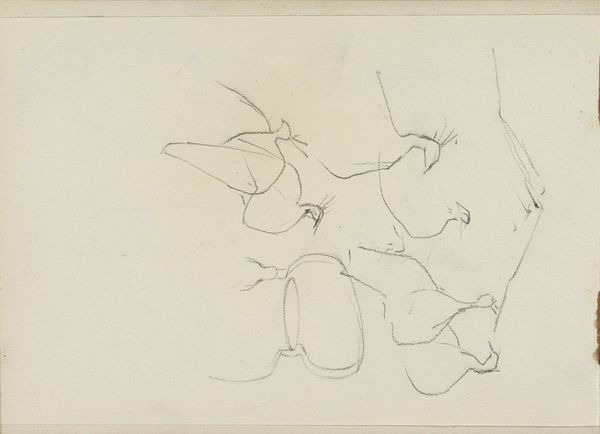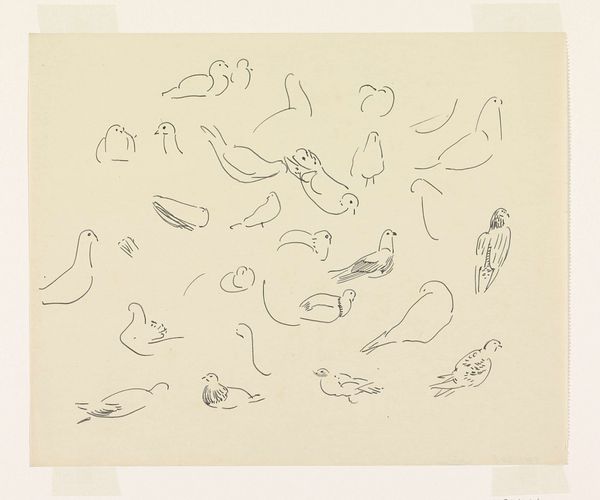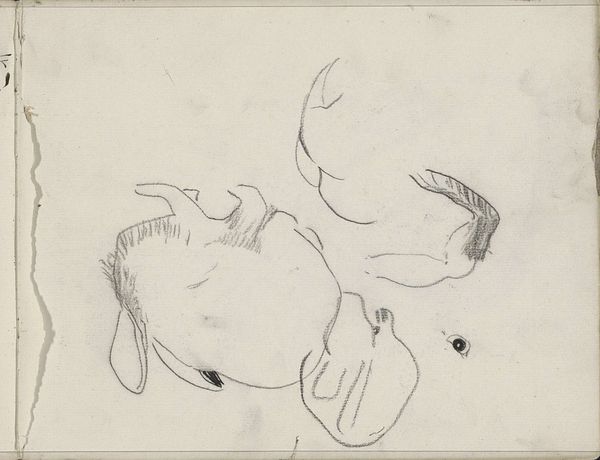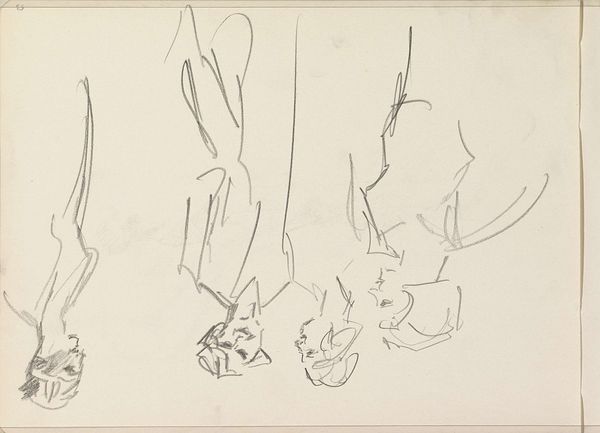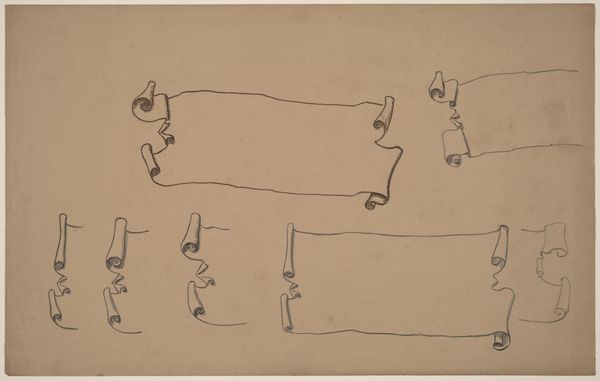
Copyright: Alexander Calder,Fair Use
Editor: So, here we have Alexander Calder's "The Tumblers II" from 1931, created with ink on paper. It strikes me as a whimsical dance of these simple figures in motion. What compositional elements stand out to you? Curator: The defining element is line. The elegance of line, of course, defines the shapes in the artwork and is economical and purposeful. How do you see Calder manipulating the use of line to create depth or imply movement? Editor: Well, the overlapping figures create a sense of depth, even though it's a flat image. And the repetition of the figures certainly gives it that feeling of constant movement, like frames in animation. Does the simplicity contribute to the impact of the piece? Curator: Precisely. Consider how Calder distills the human form. Observe how this reduction invites the viewer to engage with the essence of the figure in motion, rather than a detailed representation. It highlights the structural relationships. Editor: It’s fascinating how much he conveys with so little! I hadn't considered it so analytically before. Curator: The absence of color directs our attention solely to form and structure. Through repetition, these figures become motifs within Calder's larger artistic language, underscoring movement, balance, and spatial relations. Editor: I see. So, by stripping away the non-essentials, Calder really allows us to focus on the dynamics of form and line. I appreciate how analyzing the lines reveals so much. Curator: Indeed. This analysis reveals the sophistication hidden beneath its apparent simplicity. It's a study in form and movement using only the essential structural elements.
Comments
No comments
Be the first to comment and join the conversation on the ultimate creative platform.
